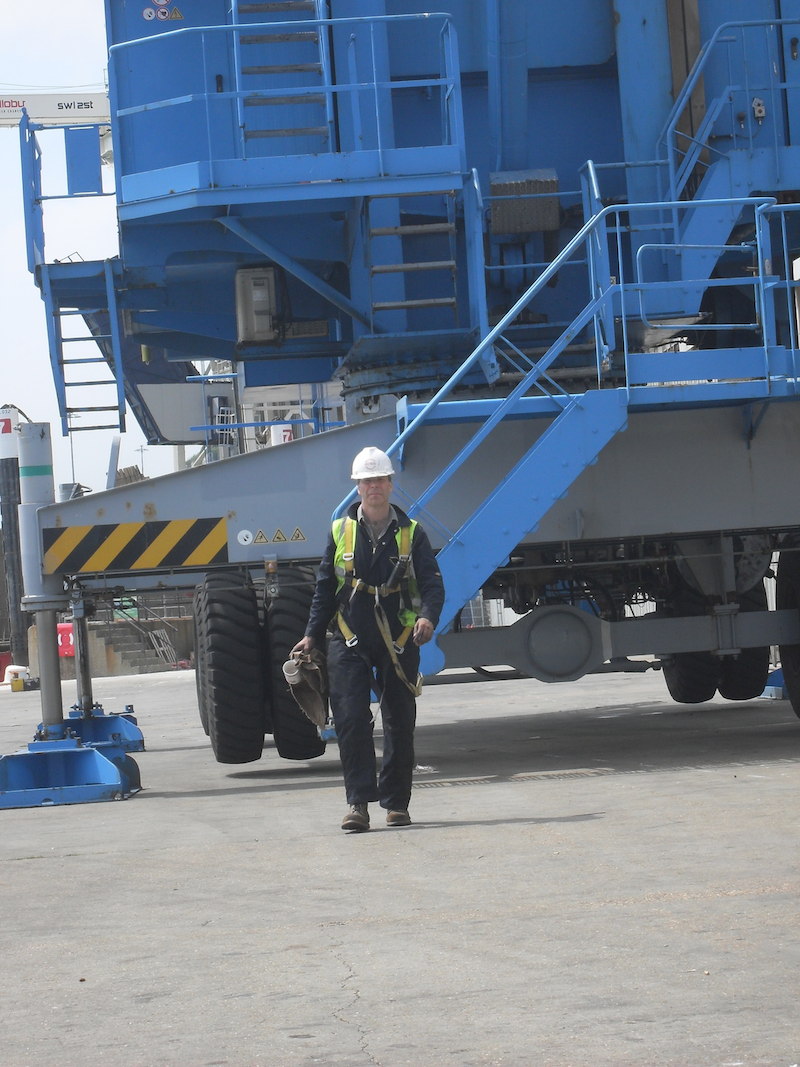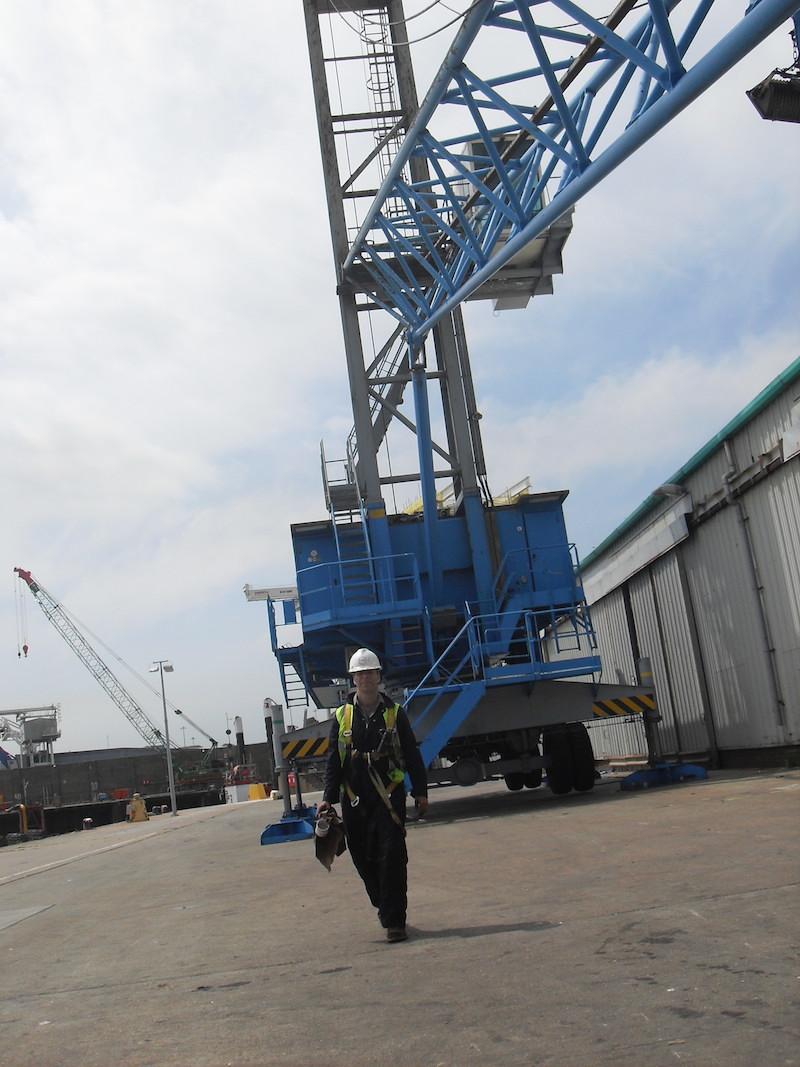
The crane needed scheduled periodic Non-Destructive Testing after a duration of time in service. A significant aspect of that would be an accumulated number of lifts which count as fatigue cycles. For continuing service it needs to be demonstrated that their is no fatigue damage. Particularly - no fatigue cracks.
ACFM explained, at: Wikipedia , BINDT , TWI . It is a variant of the Eddy Current method of NDT.
ACFM is highly effective in this application looking for fatigue cracks (and welds failed for any other reason). It also offers the major advantage that it will inspect the metallic structure through paint. So the "factory" anti-corrosion paint can be left undisturbed. ie you do not have to grit-blast off then re-apply "in the field" the paint protection system to inspect the structure.


First task - given real-world constrain of the inspection time paid-for by the client - what is the best most effective inspection we could do to most guaranteed the fitness of the crane for continuing service?
Myself and the NDT/ACFM specialist sketched the crane, and with a red
pen parallel-drew on the sketch all the locations which we evaluated
would be in a high level of tensile stress.
Given that is where fatigue cracking in most likely to occur and where
its consequences would be the most dangerous.
When the Client arrived, they produced a "hot-spot" diagram - which
identically matched our sketch. Apart from one extra, which they
explained they had only just found themselves - that there is a
severe "punch-through" stress where the pedestal (support for the slew
bearing) meets the deck / "spider" which has the wheels.
So, so far so good - we were "on the same page" in more than a
just figure-of-speech :-) They wanted the tensile "hot-spots" and the
deck-to-pedestal circumferential joint inspecting.
Which is what we did. The ACFM inspector sat in a darkened van to
easily see the ACFM screen, and communicated by radio with me.
Agreeing on which location next, directing when to start each
inspection scan with the ACFM probe, and if a repeat scan was needed.
A MEWP ("cherrypicker") and driver were provided for inspecting the
boom.
With "getting off on the correct footing" with the Client, we were able to work efficiently and deliver a structured inspection the Client was very pleased about.
Needless-to-say - we visually inspected all parts of the crane while performing the targeted ACFM inspections.
(R. Smith, 04Mar2021)